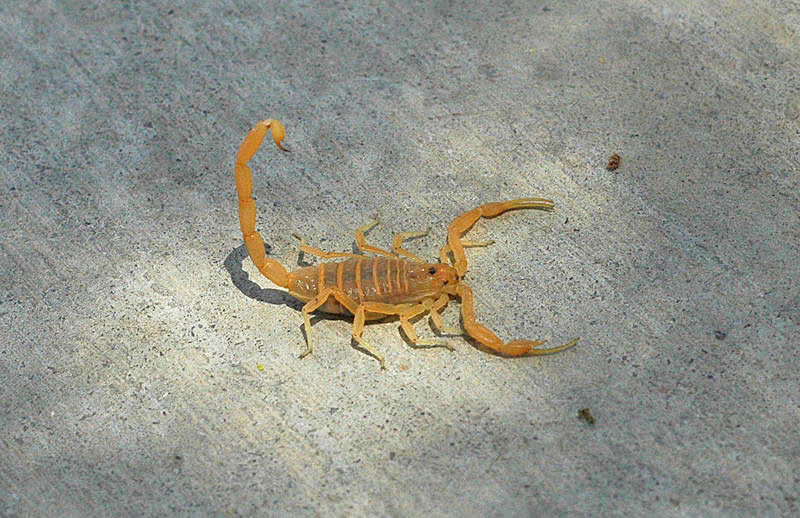The Arizona bark scorpion (Centruroides sculpturatus, included in Centruroides exilicauda) is a small light brown scorpion common to the Sonoran Desert in southwest United States and northwestern Mexico. An adult male can reach 8 cm in length (3.14 inches), while a female is slightly smaller, with a maximum length of 7 cm (2.75 inches). The bark scorpion is nocturnal and prefers to ambush its prey, usually feeding on crickets, roaches, beetles, and other small insects. Bark scorpions can also be cannibalistic, occasionally feeding on a fellow scorpion.
The bark scorpion is particularly well adapted to the desert: layers of wax on its exoskeleton make it resistant to water loss. Nevertheless, bark scorpions hide during the heat of the day, typically under rocks, wood piles, or tree bark. Bark scorpions do not burrow, and are commonly found in homes, requiring only 1/16 of an inch for entry.
Arizona bark scorpions prefer riparian areas with mesquite, cottonwood, and sycamore groves, all of which have sufficient moisture and humidity to support insects and other prey species. The popularity of irrigated lawns, and other systems which increase environmental humidity in residential areas, has led to a massive increase in the number of these animals in some areas.
Centuroides scorpions are unusual in that they are the only genus in the southwest that can climb walls, trees, and other objects with a sufficiently rough surface. Bark scorpions practice negative geotaxis, preferring an upside down orientation, which often results in people being stung due to the scorpion being on the underside of an object.

